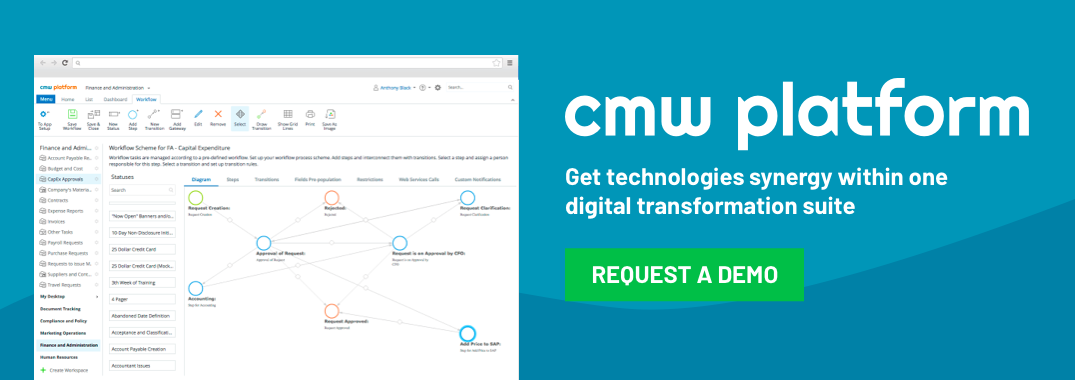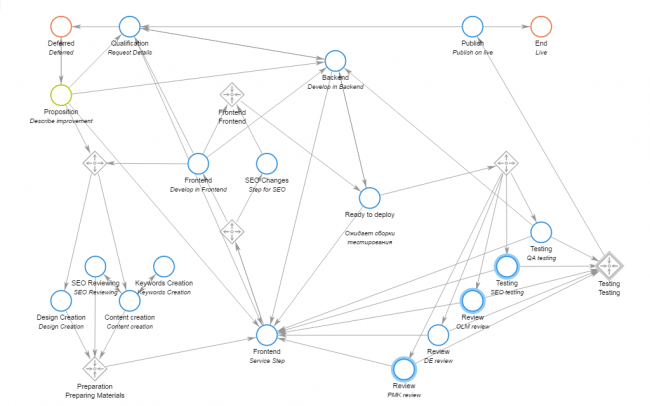4 Key Tips for Workflow Coordination
April 6, 2025
In today’s fast-paced business environment, effective workflow coordination isn’t just a ‘nice-to-have’—it’s fundamental to survival and growth. For businesses of all sizes, from agile startups to sprawling enterprises across the USA, managing how work gets done can feel overwhelming. Too often, coordination workflow relies on scattered emails, easily lost sticky notes, or fallible human memory. These outdated methods cripple efficiency, stifle productivity, and leave teams hesitant when they should be moving forward decisively. Understanding what is workflow coordination and implementing robust strategies is crucial for navigating the complexities of modern business operations in 2025.

Table of Contents
The High Cost of Poor Coordination: Common Operational Workflow Pitfalls
Inefficient operational workflow processes manifest in several costly ways. Recognizing these common issues is the first step towards meaningful process improvement:
- Ambiguous Rules & Procedures: Without clearly defined steps for specific tasks, teams operate in fog. This lack of standardized procedure leads to confusion, inconsistent outcomes, duplicated effort, and ultimately, reduced productivity. Establishing clear rules ensures everyone understands the right way to complete a task.
- Inconsistent Execution: Even with rules, failing to follow established steps consistently derails workflow processes. Skipping critical actions, whether intentional or accidental, disrupts flow, compromises quality, and negatively impacts the final result. This highlights the need for accountability within the work coordination process.
- Communication Breakdown: In any collaborative effort, communication is paramount. When information isn’t shared effectively between team members or departments (e.g., in customer support scenarios), chaos ensues. Customers get frustrated repeating information, receive conflicting advice, and lose trust in the company. This directly impacts customer retention and brand reputation. Effective tip for effective coordination in an organization often centers on communication protocols.
- Lack of Visibility: Without a clear, visual representation of the workflow – knowing who is doing what, what stage a task is in, and what’s next – individuals navigate blindly. This “sticky note and memory” approach is highly detrimental, making tasking and coordination process management nearly impossible and hindering proactive problem-solving.
Benefits of Successful Workflow Coordination
By solving the above issues, you can enhance workflow efficiency for increasing productivity. When you can coordinate workflow properly, you can set the rules and place them in a universal location that employees can access and follow. Successful coordination also means improved communication. With improved coordination and the ability to see the progress of a task in real-time, there is less time spent trying to figure out status. Instead, the team is always knowledgeable of what is happening and knows where to start. With all of this present in a platform that authorized employees can access, the platform itself is the visual representation of what is happening.Below is an example of a workflow for pretty generic task completion – publication of a new page on a website. It is obvious that manual coordination of this workflow might be a nightmare. However, workflow automation can make dramatic difference, ensure that people are focused on their duties and communication in a context of work is straightforward, and improve workflow team productivity.
 The right workflow management software keeps everyone in the loop and makes coordinating complex workflows much easier.
The right workflow management software keeps everyone in the loop and makes coordinating complex workflows much easier.Pillars of Effective Workflow Coordination for 2025 Success
Overcoming these challenges requires a strategic approach built on solid principles. These are the important tips for workflow coordination:
- Establish Crystal-Clear Processes: Define and document every step for recurring tasks. Make these procedures easily accessible to all relevant employees. This forms the bedrock of a reliable coordination process.
- Ensure Consistent Follow-Through: Implement mechanisms (training, checklists, workflow management software) to ensure steps are followed correctly every time. Accountability is key.
- Foster Seamless Communication: Utilize tools and establish protocols that ensure timely and relevant information sharing. Contextual communication, where discussions happen within the workflow, is highly effective.
- (H3) Visualize the Workflow: Employ tools that provide a clear, real-time view of task progress, assignments, and potential bottlenecks. A visual model coordination workflow empowers teams and managers.
The Power of Technology: Workflow Automation and Coordination
Manually managing complex workflows coordination of multiple activities is inefficient and prone to error. This is where technology, specifically workflow automation and coordination, becomes transformative.
Workflow management software and dedicated workflow automation tools are no longer luxuries but essential management systems for competitive businesses.
These automated solutions allow organizations to:
- Automate repetitive tasks: Freeing up valuable human resources for more strategic work.
- Standardize processes: Ensuring consistency and compliance.
- Assign tasks automatically: Routing work to the right person or team based on predefined rules.
- Improve visibility: Providing real-time dashboards and reporting.
- Enhance collaboration: Keeping everyone informed and facilitating communication.
- Optimize workflows: Identifying bottlenecks and areas for process improvement through data analysis.
These automated systems significantly increase efficiency and increase productivity, directly impacting the bottom line.
Choosing the Right Workflow Platform for Your Needs
Selecting the appropriate workflow platform is critical. Look for solutions that offer:
- Intuitive Design: Easy-to-use interfaces for both administrators and end-users. Low-code/no-code capabilities empower non-technical users to design and modify workflows.
- Customization: Ability to tailor workflows, forms, and rules to your specific business operations.
- Integration Capabilities: Seamless connection with existing systems like CRM, ERP, communication tools (e.g., Slack, Teams), and directories (like Active Directory) via APIs and third-party integrations.
- Analytics & Reporting: Robust dashboards providing real-time insights into performance, bottlenecks, and trends.
- Mobility: Support for mobile platforms, enabling workflow management from anywhere.
- Security & Compliance: Features addressing modern cybersecurity threats and regulatory requirements.
- Scalability: Ability to grow with your business needs.
Example: Platforms like CMW Tracker (and similar solutions on the market) are designed to address these needs, offering features like drag-and-drop editors, unified data and document management, real-time control, configurable analytics, and support for task assignments and collaboration, often requiring minimal IT intervention for setup.
Key Trends Shaping Workflow Coordination in 2025
Staying ahead requires understanding the evolving landscape. Key trends for 2025 include:
- AI-Powered Hyperautomation: Moving beyond simple automation, AI and Machine Learning (ML) are enabling intelligent workflow automation and coordination. This includes predictive analytics for resource needs, intelligent task routing based on skills or workload, automated decision-making for routine approvals, and AI-driven process mining to uncover hidden inefficiencies. Source: Insights from Gartner research on Hyperautomation trends (e.g., Gartner’s Top Strategic Technology Trends reports).
- Enhanced Cybersecurity in Workflows: With rising cyber threats, securing workflows is paramount. Trends include Zero Trust Architecture implementation, securing cloud-based workflow tools, enhanced endpoint protection for remote workers accessing workflows, and embedding security checks within automated processes (DevSecOps principles applied to workflows). Compliance with regulations like CCPA remains crucial. Source: Reports from cybersecurity firms like CrowdStrike or publications like Cybersecurity Dive highlight evolving threat landscapes.
- Sophisticated Tools for Hybrid & Remote Work: The permanence of hybrid models necessitates advanced coordination workflow tools. Beyond basic chat/video, expect deeper integration with project management tools, enhanced asynchronous collaboration features (e.g., digital whiteboards embedded in workflows), and better management systems for tracking distributed team productivity and engagement. Tools like Microsoft Teams, Zoom, and Slack continue to evolve with richer integrations.
- Predictive Analytics and Process Intelligence: Leveraging data from workflow processes is key. Predictive analytics forecasts potential bottlenecks or delays, while process intelligence tools use AI to analyze workflow data, visualize actual process execution (not just the designed one), and suggest data-driven process improvement opportunities to optimize workflows. Source: Advancements highlighted by BI and Analytics leaders like Tableau or Qlik.
- Low-Code/No-Code Democratization: The rise of low-code/no-code workflow platforms empowers ‘citizen developers’ within business units to build and adapt workflows quickly, reducing reliance on IT departments for minor changes and fostering agility. Source: Forrester Wave™ reports often cover Low-Code Development Platforms.
- Composable Workflow Architectures: Businesses are moving towards building flexible workflows by assembling modular, independent components (microservices, APIs). This allows for faster adaptation to changing needs and easier integration of best-of-breed tools (third-party integrations).
- Sustainability (ESG) Integration: Workflow coordination is increasingly used to support Environmental, Social, and Governance goals. Examples include automating processes to reduce paper consumption, optimizing logistics workflows for lower emissions, and building traceability into supply chain workflows for ethical sourcing verification. Process automation itself contributes by optimizing resource use.
- Focus on Employee Experience (EX): Clunky, inefficient workflows are a major source of employee frustration. Optimizing internal processes via better workflow coordination is now seen as crucial for attracting and retaining talent in the competitive US labor market.
Practical Workflow Tips for Implementation
Ready to improve your coordinate workflow? Here are actionable workflow techniques:
- Start Small: Don’t try to automate everything at once. Pick one high-impact, problematic workflow first.
- Involve Your Team: The people doing the work often have the best insights. Engage them in the design and refinement process. This is a crucial tip for effective coordination in an organization.
- Document Everything: Clearly map out the current state and the desired future state of your workflow.
- Choose Tools Wisely: Select workflow management software that fits your technical capabilities, budget, and specific needs. Consider scalability.
- Train Thoroughly: Ensure everyone understands the new process and how to use any new tools effectively.
- Measure & Iterate: Track key performance indicators (KPIs) for your workflows. Use data to continuously identify areas for process improvement and refinement.
Workflow Coordination Examples in Action
Effective workflow coordination is vital across industries:
- Workflow coordination in e commerce: Managing the entire order fulfillment process, from purchase confirmation and inventory check to packing, shipping notification, and handling returns. Workflow automation and coordination in e commerce ensures speed and accuracy. (A visual workflow automation and coordination in e commerce ppt slide could map this). This is a prime coordination of work example.
- Insurance workflow coordination: Streamlining claims processing, from initial filing (first notice of loss) through investigation, assessment, approval/denial, and payment. This requires careful handling of documentation and communication between adjusters, customers, and repair services.
- Customer Support: Managing support ticket lifecycles, ensuring tickets are routed to the correct agent (task assignments), tracked through resolution stages, and that knowledge base articles are updated based on recurring issues.
In many organizations, a dedicated workflow coordinator role emerges (what is a workflow coordinator? – someone responsible for designing, implementing, and monitoring workflows) or these responsibilities fall to operations managers or IT business analysts.
Conclusion: Embrace Coordination for a Competitive Edge in 2025
Ineffective workflow coordination is a silent drain on resources, productivity, and morale. By understanding the core principles, leveraging modern technology like workflow automation tools, staying informed on trends, and implementing practical workflow tips, businesses in the USA can transform their business operations. Proactively managing and optimizing how work flows through your organization increases efficiency, increases productivity, enhances customer support, empowers employees, and ultimately builds a more resilient and competitive enterprise for 2025 and beyond.



